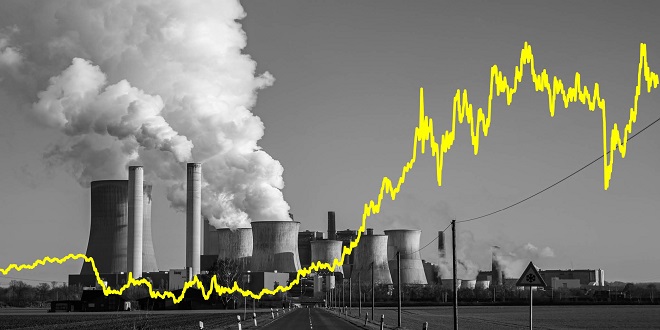Energy traders see big gains in the energy markets

Everyday life is dependent on energy resources. These vital resources include crude oil, natural gas and fuel oil as well as gasoline. All energy assets can be traded on commodity exchanges around the globe. Natural gas and oil are the raw materials for producing electricity. This is essential for many businesses as well as providing power worldwide. Natural gas is used for cooking, while heating oil is used in winter to heat the house. As well as being used for transportation, gasoline is also used to power other machines.
Forex traders love energy trading because it offers a different way to trade global economic events than FX. However, many forex pairs are still tied to energy costs. Oil-producing countries, like Canada, are particularly susceptible to rising oil prices. Due to the large and liquid exchanges for these commodities, a Forex broker offers CFDs on at most a few of these commodities.
Energy trading refers to the exchange of commodities falling within the “energy assets asset class”. This asset class includes:
Crude oil (US oil)
Brent crude oil (UK oil)
Natural gas
Heating oil
Gasoline.
Since heating oil and gasoline are derivatives from crude oil, their fundamentals can be reconnected to their parent commodity. Natural gas is an independent commodity asset. It is usually found as a layer on top of petroleum in geological formations where drilling takes places.
How is Energy Commodities Traded?
Primarily, energy assets are used as raw materials in the production and distribution of fuel. Futures contracts can be traded on many commodities markets. A futures contract can be legally enforced to buy or sell a particular asset (such as a commodity) in a future at a specified price.
You can also extend this to
1) There are usually at least two parties to futures contracts: a buyer or a seller.
2) Futures contracts are characterized by a settlement date and a price.
You can settle them with delivery of the commodity or on a monetary basis as with online energy trading.
Spot energy trading refers to energy trading where the settlement is in cash. Spot refers to an exchange or transaction that is made immediately, or “on-the spot.” This allows traders and investors to bet on the future price of energy commodities without the need to physically deliver them.
Option trading can be used to trade assets. There are many options to trade. You can find out more about them here. The majority of energy trading that you will do with brokers will be done on a spot basis with both long and short orders. These orders are based solely on the price difference between entry and exit prices as well as asset movement direction.
Here are some of the most well-known commodity markets in which energy can be traded:
EEX (European Energy Exchange)
CME Group (Chicago Mercantile Exchange).
NYMEX (New York Mercantile Exchange).
ASX (Australian Securities Exchange).
The NYSE Euronext
TOCOM (Tokyo Commodity Exchange).
MCX (Multi Commodity Exchange)
What Drives Energy Commodities’ Demand?
Crude oil is the preferred energy asset in terms of volume. Crude oil derivatives can be used in a variety of ways: personal vehicles, transport of goods and services and engine power. In many countries, kerosene (a crude-oil derivative) can still be used for cooking. There is therefore a lot trading activity on the financial markets for crude oil.
There are two types:
Brent crude oil, which is the most powerful variant. It is the most important global benchmark for crude oil. This category also includes crude oil from Nigeria, Kuwait, Dubai, and Nigeria. It is much more expensive than WTI crude.
Light crude, also known as US oil and West Texas Intermediate, is a lighter version of heavy oil (WTI). It is used as a benchmark in the NYMEX contract.
What is the price of crude oil and how does it affect prices?
OPEC’s production quotas
Natural calamities
Speculative Endeavors
Political instability (exporting countries)
Global Economic Situation.
The market decides the price of crude oil. All factors can have an effect on supply and demand.
Natural Gas
What factors influence natural gas prices Like other commodities, natural gas prices are affected by supply and demand fluctuations. These factors influence natural gas prices:
Production quantity
Natural gas storage volumes
Imports/exports
Weather patterns
Situation of the World Economy
Pricing and availability of alternative fuels
Trading in Energy Assets
In order to trade energy assets (psychology market participants), fundamental analysis, technical indicators and sentiment analysis all play a role. Each type of analysis will require a lot of time. These are the most important aspects to consider in basic analysis. It is enough to say that technical analysis can be used to trade.
Opposition and support
Trendlines
The graph shows patterns
Candlesticks
Extensions and retracements of price
Understanding the psychology of market players is essential for sentiment analysis. This is what drives product demand. In every market, there are buyers, sellers and uncommitted trader. Uncommitted traders fluctuate the asset’s price to the north or south if they are motivated by a fundamental reason (either to sell or buy). Traders can make accurate predictions about the future of crude oil and natural gas prices by understanding the dynamics of the market.
The best results are achieved when all three types are combined. It is also important to understand where institutional traders are heading with their trades. Their huge trading volumes usually have an impact on the markets.




